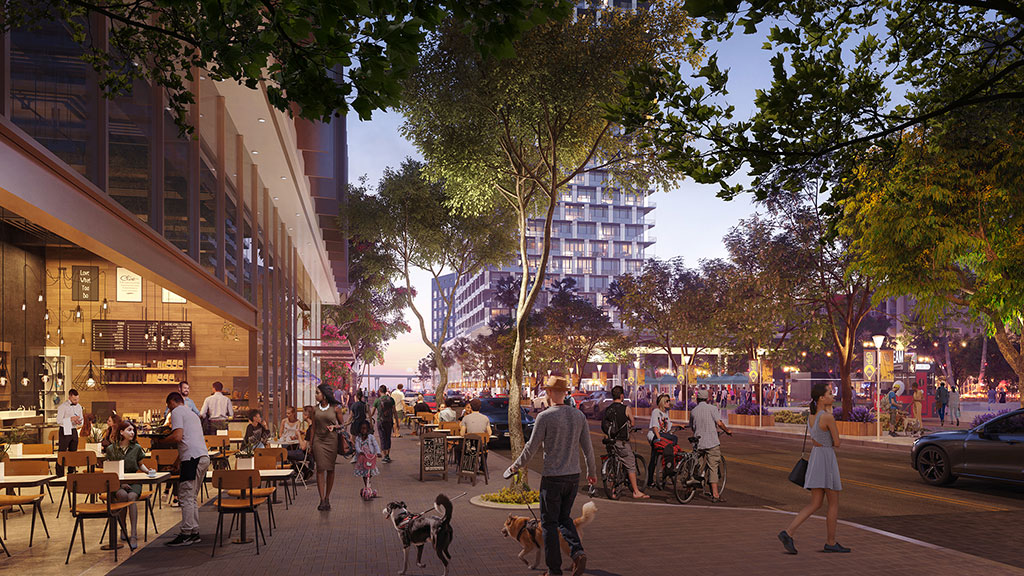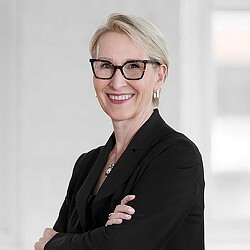The Urban Block Club: A New Model to Revive Our Central Business Districts
October 21, 2022 | By Sheryl Schulze
Straight from the headlines and our shared experience, central business districts are on life support. The transformation of failing business districts also presents a time-sensitive opportunity for us to rethink real estate development and design equitable, low-carbon communities to address the needs of society and our environment. One approach for revitalizing our cities is to reimagine a more sustainable, resilient, and community-focused approach that brings different property owners within a district or block to work with each other and the city to improve the tenant experience and create viable developments. We call this idea the “Urban Block Club.”
For decades, we put too much emphasis on the idea of an office development focused hub within our cities that supported business and little else. That model — and the urban planning that supported it — is no longer viable. Thankfully, the creation of sustainable districts that combine a mix of uses at the intersection of live, work, and play is on the rise using repositioned assets and responsible development.
The subset of any city is its neighborhoods and communities. To evolve to more meaningful settings, we need to focus on people to understand their experience and sense of belonging. What makes a community thrive? People who are financially invested yet also desire social equity, health, wellness, and, let’s face it, a happiness factor. According to Gensler’s Spring 2022 City Pulse Survey, 74% of urban residents agree that their city provides a great experience, but move intentions are on the rise and two out of three urban residents believe we should completely rethink city life for a post-pandemic world.
Look at the neighborhood where you live. Do you know your neighbors, community organizers, or block club president? Do you invest not only in your home but your neighborhood? Do you support shops and know the owners? Is your community experiential — with cafes, parks, schools, entertainment, and healthy dining? Does your neighborhood offer character? Have you visited communities that you’ve envied and taken an idea or two home with you? Have any of these ideas also made you yearn for more?
Introducing the Urban Block Club
One approach to revitalize our cities is the concept of the “Urban Block Club,” a community of asset owners, residents, shopkeepers, and educators who work collectively, not independently, to foster engagement to create sustainable ecosystems in the surrounding blocks where they live, work, play, and learn. With this approach, these different cohorts and property owners come together to coordinate their offerings and create a strategic approach for multiple buildings in one block. These unique 20-minute neighborhoods have their own distinct fabric celebrating their unique character, offerings, and experiences.
With vacant office space climbing, we’re analyzing existing office buildings for residential and mixed-use compatibility. From a sustainability lens, we will reduce carbon, shorten timelines, and save costs through adaptive reuse. It’s not can-do; it’s a must. Our housing shortage is global, and the need for housing that’s not only affordable but centric to a supportive environment is attainable if we all lean in.
In support of this, we’re working with clients to move building amenities to the ground plane to engage neighbors in other buildings and for visitors to experience. While most buildings today offer their own internal amenity mix, those spaces aren’t inclusive. By introducing shared amenities, a neighborhood can leverage things in its own backyard, build community, and thrive.
The cost-benefit can be significant. Asset owners and managers — both office and residential — are having to consider an increasingly diverse array of amenities that can endow a unique allure to their properties. The cost to create these growing offerings by the property is substantial. By introducing a shared amenity offering that is accessible and inclusive on the streetscape, offerings can be expanded and bespoke. The reimagined areas become 24/7 and no longer 9-5. They support wider sidewalks and expand the front porch. Walkability scores improve and enhance micromobility to reduce vehicular traffic.
What may have been a dream can become a reality in our cities. Through public-private partnerships, policy, regulation, and incentives, this is achievable. Environmental, Social, and Governance (ESG) initiatives are expanding throughout every sector and being delivered.
Rather than a single-minded building repositioning approach, we need to think bigger — to consider the larger impact we can make on an entire district or city. The urban block club is one such solution to revitalize our communities, especially in markets that are struggling to rebound. In a world that's become divisive, segregated, and suffering from devastating climate issues, our generation needs to come together for future generations to enrich humanity and, simply put, save our planet. The next step is ours.
Calling all community organizers…The Urban Block Club is coming to a neighborhood near you.
For media inquiries, email .

